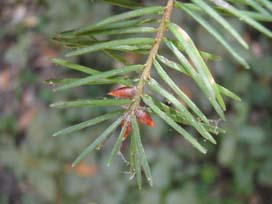
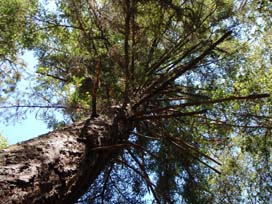
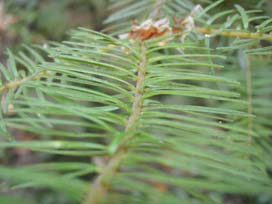
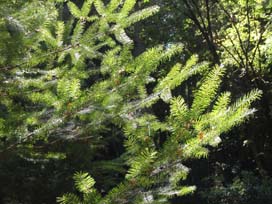
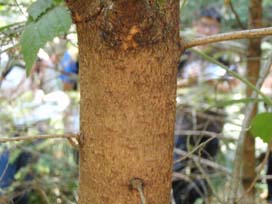
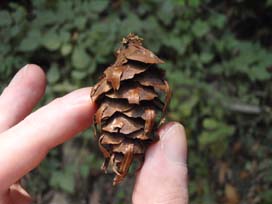
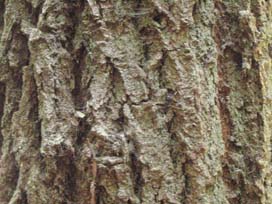
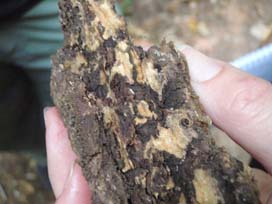
Douglas-fir
Pseudotsuga menziesii
Family: Pinaceae.
Type: Large evergreen conifer.
Needles: Rounded, not sharply pointed. In shade the needles arrange in a flat configuration, but they are in fact distributed around the stem, and in sun they will radiate in a bottle-brush shape. Individual needles are dropped, not sprays. When needles are removed from a stem, no circular scar remains, but a small peg or lip will be left on the stem (contrast to red and white fir, for example).
Twig: Terminal buds are brown or red and very strongly pointed, like Christmas lights, a useful identifying mark. Young bark is smooth and light brown; older bark is corky, chocolate brown, and deeply furrowed, with a light tan layer under the surface that distinguishes it from other conifers.
Cones: Pendant (downward-hanging), with woody circular scales that each have an associated papery, three-pronged bract, which is unique to the Douglas-firs.
Miscellaneous: Intermediate shade-tolerance and drought-tolerance. Common associate in redwood forests, coastal forests, and mixed evergreen forests. Grows north into British Columbia, south into Arizona and New Mexico.
 |
 |
 |
 |
 |
 |
 |
 |